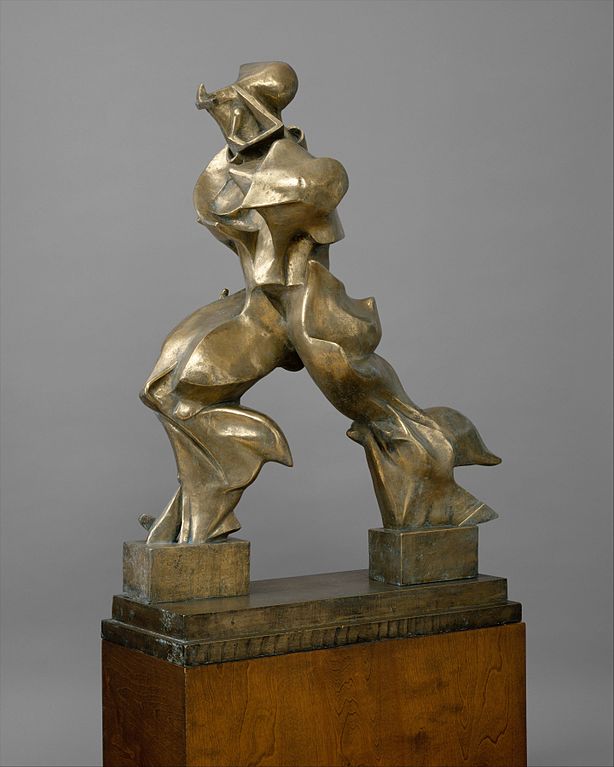Umberto Boccioni, Unique forms of continuity in space
One of the cosigners of the Futurist manifest was Umberto Boccioni (1882-1916), who produced what is the definitive work of Futurist sculpture, Unique Forms of Continuity in Space.

This piece highlights the formal and spatial effects of motion rather than their source, the striding human figure. The figure is so expanded, interrupted, and broken in plane and contour that it almost disappears behind the blur of its movement – just as people, buildings, and stationary objects become blurred when seen from an automobile traveling at great speed on a highway or a train racing through the countryside along its steel rails. Boccioni’s search for sculptural means of expressing dynamic movement reached definitive expression in Unique Forms. Although Boccioni’s figure bears a curious resemblance to the Nike of Samothrace, the ancient sculptor suggested motion only through posture and agitated drapery, not through distortion and fragmentation of the human body – an approach to representation that is the antithesis of the core principles of classical art.[1]

- Fred S. Kleiner, Gardner’s Art Through the Ages: The Western Perspective, vol. 2, 15th ed., (Boston: Cengage Learning, 2017), 780. ↵

